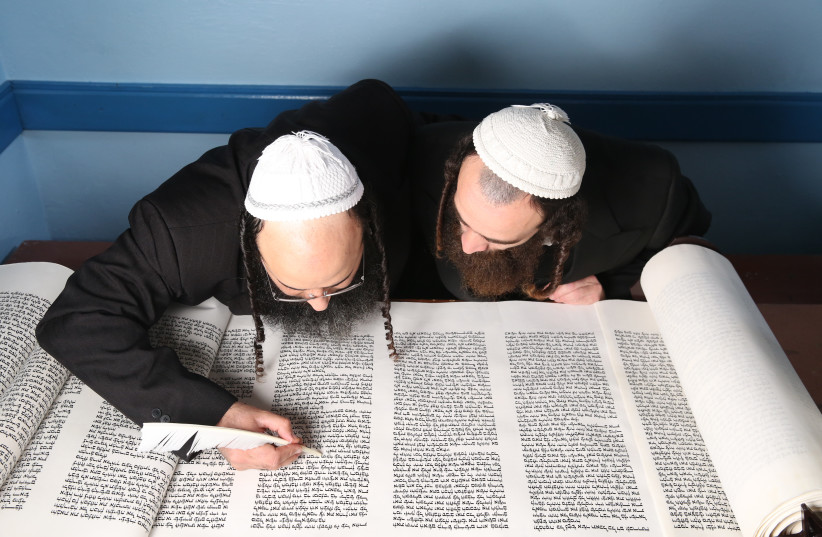A dejected Moses, having failed to convince Pharaoh to let the Israelite people go, asked God, at the end of last week’s parasha, “Why did you send me?” (Ex. 5:22).
In this week’s parasha, Va’eira, God revealed His ineffable Name to Moses, in an attempt to fortify him to continue his task.
God then also told Moses about the five stages of redemption that would unfold, describing them using five specific phrases (Ex. 6:6-8). The first four became the basis of the multiple use of the number four during the Seder: four cups of wine, four questions, four children, four tellings. The fifth phrase is the source for Elijah’s cup.
There are those who follow a more recent tradition of also including “Miriam’s cup” on the Seder table. Rabbi Tamara Cohen explains that one of the proof texts for its use is a statement in the Talmud, “If it wasn’t for the righteousness of women of that generation, we would not have been redeemed from Egypt” (Sota 9b).
“Please, my Lord, no man of words am I, not from yesterday, not from the day before, not even since you have spoken to your servant, for heavy of mouth and heavy of tongue am I!”
Exodus 4:10
None of God’s reassurances convinced Moses that things would be different in future encounters with Pharaoh. Rather, Moses reiterated his original hesitation when he had first been approached by God at the burning bush: “Please, my Lord, no man of words am I, not from yesterday, not from the day before, not even since you have spoken to your servant, for heavy of mouth and heavy of tongue am I!” (Ex. 4:10). In our parasha, he reasserted that he was still “a man of impeded speech” (Ex. 6:12).
We all have limits, both perceived and real. Knowing them and knowing the difference between the two are key for self-knowledge. That awareness presents us with choices.
Do we make peace with our limits and live accordingly or do we try to prevail?
Moses, at that moment, was willing to live within the constraints of his “impeded speech.” However, 40 years later in the Book of Deuteronomy, we find that Moses’s speech was lofty prose and poetry. What happened? Unable to run away from the call of God, Moses was forced to use speech both in confronting Pharaoh and leading the people. Along the way, Moses forced himself to turn his weakness into his greatest asset.
With all of this, we note that Moses is described in the Torah as “the most humble person on the face of the Earth” (Num. 12:3). That humility allowed him to recognize his shortcomings, as well as his stronger traits.
In addition, we see Moses as an example of the Dunning-Kruger effect whereby some people overestimate their abilities and knowledge, while others can underestimate their abilities and knowledge. In Moses we have an individual who at first underestimated his abilities but through the course of his life was able to lift his encumbered speech. His humility allowed for that development to unfold in a fashion so that he did not overestimate himself once he had achieved that new level.
CERTAIN ATTRIBUTES of ours may restrain us, and we may decide to stay in a lane; but if we choose to rise above them, and if we succeed, which is not guaranteed, great things can sometimes happen. Not an easy task for Moses or anyone.
At the Games of the 30th Olympiad in London in 2012, American hurdler Aries Merritt increased his racing speed, running a then-personal best of 12.92 seconds and won the gold medal in the 110-meter hurdles. Moreover, the following month he set a new world record for the 110-meter hurdles of 12.80. That record still stands to this day. How was he able to do all that?
After winning the gold medal, he talked about how he had changed the foot he pushed off of when he raced. Some say that is like changing the hand we write with; and he made that change in eight months. When asked how he built power on his weaker side, he answered, “Diligence. It took me a long, long time.” Elaborating, he explained, “I focused so much on my weaker side, and it balanced things out so now I have equal power in both legs, so I am able to apply equal force, which at the end results in me running faster times.”
Like Moses, Merritt took a weakness and turned it into a strength. We often try to avoid our own weaknesses; the classes we choose not to take, a skill we don’t feel we are good enough performing, etc. Sometimes, if we put energy into that perceived weakness, we may discover that, because of the added effort required, we are able to transform that which was weaker within us into something we are more competent and proficient in doing.
Spanish Nobel laureate Vicente Aleixandre began his poem “Como Moises es el Viejo” (The Old Man Is Like Moses) with the words: “Like Moses on top of the mountain. Every man can be like that.”
We may not get to the top of the mountain, but as Merritt modeled for us, we all, if we so choose, can be like Moses and work on our own weaknesses, attempt to overcome the hurdles of life we try to avoid, and turn them into strengths.
By so doing, we work to affirm the hopes of another Olympic medalist, Vincent Matthews, who wrote in his Trackman’s Prayer, “Now I lay me down the blocks, I ask the Lord for socks and jocks, if I should die before the gun, I ask the Lord my race be won.” ■
The writer, a Reconstructionist rabbi, is rabbi emeritus of the Israel Congregation in Manchester Center, Vermont. He teaches at the Arava Institute for Environmental Studies on Kibbutz Ketura and at Bennington College.

